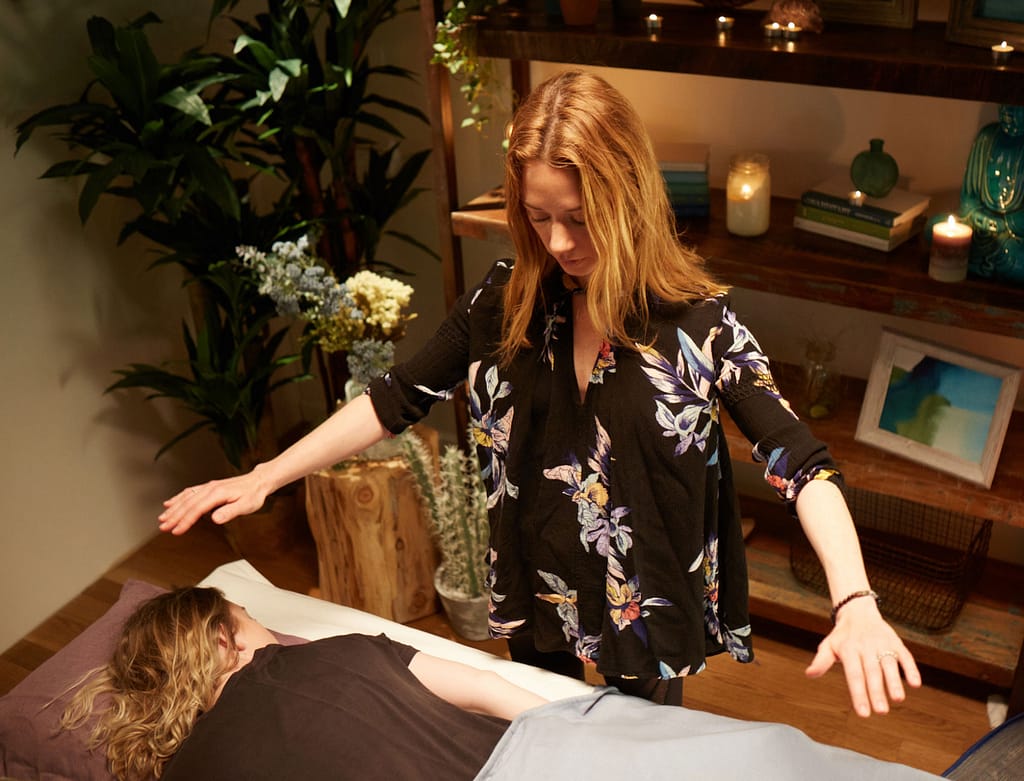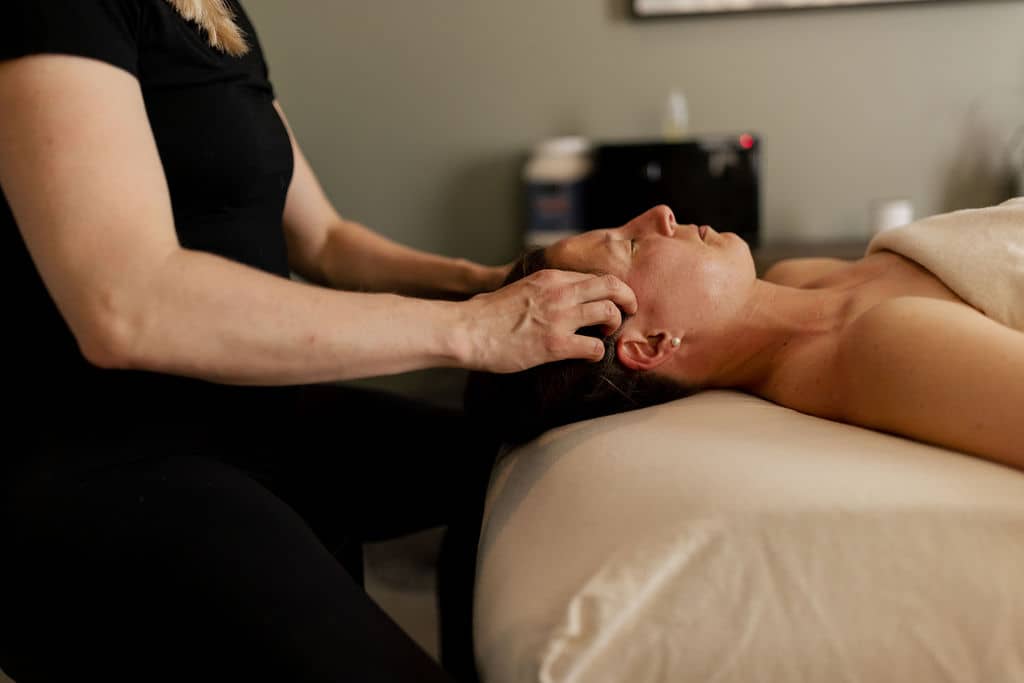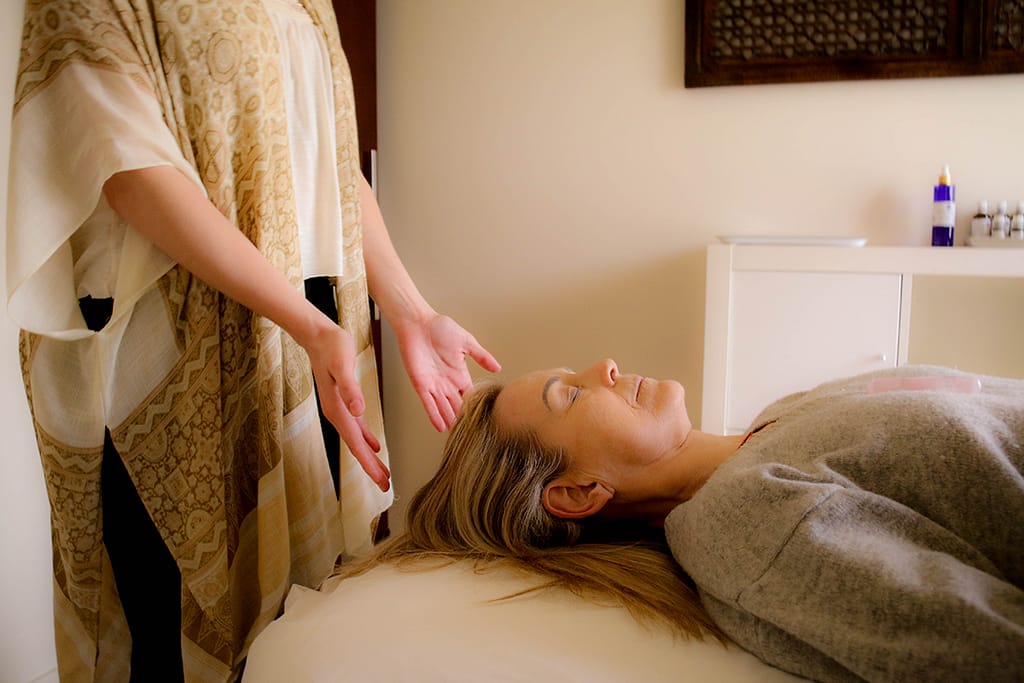
Reiki is an ancient healing practice that has gained considerable recognition in the wellness industry because of its holistic perspective on health and well-being. It is important to note that this practice originated from Japan and it refers to a method of energy healing that involves the transmission or channeling of universal life energy through the practitioner’s palms to another person.
An Overview of Reiki Healing
What is Reiki?
Reiki is said to be a Japanese art used for healing spiritually. The meaning of “Rei” in Japanese is the word “Direct contact with God’s Wisdom” or “Of Being Above.” In addition, “ki” stands for life force; therefore, Rei plus ki signifies spiritually guided life force energy.
Historical Development and Cultural Significance
Originally founded by Mikao Usui in early 20th century Japan, this mystical tradition has transformed over time into a more structured practice that transcends different societies across the world. Though initially meant for spiritual enlightenment purposes, today it would not be wrong if one perceives Reiki from a therapeutic point especially when comparing between western paradigms and other cultures.
Fundamental Elements of Reiki Healing
Reiki is based on the belief that there’s an unseen “life force energy” flowing through everyone. This life force is what makes us alive. Whenever one’s life force energy becomes low, then it increases the chances of becoming ill or feeling stressed and when high; we tend to be more able to feel joy and remain healthy.
- Non-Interference Principle: In contrast to other healing practices, Reiki does not need the healer to select specific parts of the body for its flow.
- Equilibrium Principle: Reiki aims to bring about balance within the body, enhancing physical, mental, and emotional well-being.
- Self-Healing Principle: Reiki prompts the person receiving it to enhance their own natural healing abilities.

Reiki’s Advantages for General Well-being
The versatility and efficiency of Reiki in promoting holistic health make it well known. This section examines how Reiki benefits one’s overall health across the physical, mental, emotional, and spiritual dimensions with specific emphasis on this practice’s ability to significantly enhance life values.
Benefits for Physical Health
Many Reiki practitioners and receivers claim that they get better after Reiki sessions for various physical illnesses. Some key ones include:
- Pain Management: Studies have illustrated that stress often worsens pain symptoms from migraines, arthritis, sciatica, and muscle aches; however, by facilitating energy flow as well as decreasing stress levels, reiki can relieve these painful conditions.
- Boosted Healing and Recovery: Currently, however alternative therapies frequently serve as an adjunctive intervention in hospitals and clinics to expedite recovery after surgery or illness which include the body’s own healing mechanism.
- Better Digestion and Sleep Quality: In addition to improving sleep patterns through inducing deep relaxation states, reiki also enhances digestion which are actually vital elements of general health.
Mental and Emotional Benefits
While the mind has benefited from the significant aspects of reiki on physical health,
- Stress Reduction: Regular sessions of reiki can lower so much stress which is a primary cause of other health problems. It is believed to relieve both the physical body and mind through balancing energies in them.
- Clear Thinking and Concentration Skills: For instance, Reiki healers have said that it helps in clearing their minds, resulting in increased concentration abilities, hence overcoming issues such as anxiety or depression.
- Emotional Restoration: Helping people with negative feelings or trauma experiences leads to growth in emotional strength or positive outlooks towards life, this may imply a sense of purpose.
Spiritual/Holistic Benefits
Reiki goes beyond physical healing into spirituality, which forms its holistic approach;
- Increased Spiritual Awareness: It seems like many people find that becoming open to greater spirituality or a closer relationship with a higher power, irrespective of religious beliefs, occurs after experiencing Reiki.
- Self Reflection and Development: Through deep personal insight, self-awareness can be achieved as well as facilitating personal growth with self-improvement being encouraged.
Step-by-Step Guide: What Happens During a Reiki Healing Session?
A Reiki healing session is one that contains several stages to help an individual relax and balance his energy via several stages.
- Initial Discussion: The session starts off with a talk about health issues, goals, and expectations between the practitioner and the receiver so that the session may be tailored to the needs of the individual.
- Preparation: The client lies fully clothed on a treatment table in a quiet, comfortable setting. The atmosphere is usually relaxing, enhanced by soft music or dimmed lighting.
- Hand Positions: The practitioner passively and gently places his hands successively on or above various parts of the body in a position aimed at covering all the major areas of the body, which correspond to the energy centers or chakras.
- Energy Flow: Hands are kept in each position for a few minutes, allowing Reiki energy to flow, and generally, this brings about relaxation, reduces stress, and balances energy.
- Sensations Experienced: These may be in the form of heat, tingling, or simply a deep sense of calmness or sleepiness. There could also be emotional releases; sometimes, the recipients receive insight into their situations.
- Discussion After the Session: The practitioner will discuss what the recipient experienced, what insight was gained, and what further care they need.
It is a holistic approach working toward the release of energy blockages, thereby enabling the body to use its natural functions to help heal and balance the whole being.
Scientific Insights: What Does the Research Say About Reiki?
Various research into Reiki has shown mixed but promising results, a possible complementary role for various conditions. Herein is included a selection of scientific studies concerning the effectiveness of Reiki on stress reduction, pain management, and well-being:
- Stress and Anxiety Reduction: Reiki treatment can, of course, reduce the level of stress and anxiety. Studies indicated that Reiki relaxes anxiety and improves the relaxation of patients in hospitals, as evidenced by a 2016 study conducted by the Journal of Evidence-Based Complementary and Alternative Medicine. This is associated with its effect of turning on the parasympathetic nervous system to create a relaxed state.
- Pain Management: Many studies have concluded that Reiki can reduce pain. For example, a study in Cancer Nursing says that cancer patients who received Reiki had less pain and an improved quality of life compared to those patients not receiving Reiki. This effect is believed to result from Reiki’s influence on the body’s pain perception and endorphin release.
- Emotional Healing: The evidence shows that Reiki can be used to improve one’s emotional health because it induces relaxation and release of emotions. A 2019 study published by Global Advances in Health and Medicine demonstrated the efficacy of Reiki in reducing symptoms of depression and improving emotional well-being in patients with psychological distress.
- Limitations of Current Research: While the results of many studies appear promising, a number are clearly limited by small sample sizes or, in some cases, a complete lack of controls. Further large-scale studies are needed in the form of randomized controlled trials to fully establish the efficacy of Reiki.
In all, scientific research underlines that Reiki is a powerful means of complementary therapy, especially in reducing stress, managing pain, and dealing with emotional wounds, though studies with more robust power are needed to confirm its complete benefits.
Dispelling Myths and Misconceptions about Reiki
Reiki is often plagued as a modality by misconceptions and skepticism. Let’s start by dispelling some of the most common myths and misunderstandings that surround the treatment modality.
- Myth 1: Reiki Is a Religion
Reiki is not a religion or something that one needs to believe in; it is a spiritual way of healing. One does not necessarily have to have faith in a certain god or religious ceremony. Instead, Reiki would make use of universal life energy, which practitioners say makes up part of all living things. Reiki is offered for every creed and background.
- Myth 2: Reiki Is Only a Placebo
Critics will argue that any observed effects from the practice of Reiki are due solely to the placebo effect. Research into the modality of treatment has illustrated that Reiki produces quantifiable physiological responses, including a reduction in heart rate, blood pressure, and anxiety. There could, in fact, be some placebo aspects to a number of the associated benefits, but studies have actually been able to show that benefits from Reiki can occur along tangible lines beyond that which simple expectation would produce.
- Myth 3: Anyone Can Learn Reiki in an Instant
While Reiki is for anyone, being a good practitioner takes more than just a short training session. It takes commitment and time to practice with guidance from an accredited Reiki Master so that he can understand techniques for energy flow and intuition.
- Myth 4: Reiki Can Cure Serious Illnesses
Reiki itself is not a solution to severe medical conditions but rather a complementary therapy to aid the body in its natural process of healing, reducing stress, and enhancing emotional well-being. This is used in addition to, not as a replacement for, conventional medical treatment.
In clarifying these myths, we value Reiki all the more as a unitary practice that supports well-being and enhances the natural healing of the body.

Incorporation of Reiki into Conventional and Complementary Therapies
Reiki is a modality of energy healing that can be easily incorporated with conventional and complementary therapies for overall well-being. Working alongside treatments in medicine and using a more holistic approach helps give a more complete care plan.
Complementing Medical Treatments:
Reiki is quite often used in conjunction with all the conventional medical treatments, from surgery through chemotherapy to medication. It can help:
- Reduce stress and anxiety before and after medical procedures.
- Assist in quicker recovery by the promotion of relaxation and reduction of pain.
- Improve comfort for patients and emotional resilience when undergoing challenging treatments.
Supporting Other Complementary Practices:
Reiki goes well with other complementary practices of acupuncture, massage, and yoga. Integrating Reiki can:
- Improve the effectiveness of such practices through the facilitation of a balanced flow of energy.
- Allow the client to relax and realize deeper states of mindfulness in sessions.
- Support the body’s natural healing processes to work in harmony with other modalities.
Creating a Holistic Approach to Wellness:
The combination of Reiki with other conventional and complementary therapies ensures a holistic approach toward health. Such integration takes care of the physical, emotional, and spiritual facets of the overall well-being of the individual.
On the whole, Reiki is such a versatile tool that complements several health approaches towards balance and harmony. It helps in actively involving a person in his treatment process; hence, it therefore proves to be a treasure in many treatment options.

How to Find and Choose the Right Reiki Practitioner?
Choosing the right Reiki practitioner is essential for a beneficial and successful healing process. In this section, you will find hints that will make it easier for you to choose an experienced reiki healer, as well as various sources of information on where to get one.
Hints for Choosing a Reiki Practitioner
- Certification and Experience: It’s necessary that the practitioner possesses the required certification and has enough experience.
- Recommendations and feedback: Testimonials from people who have tried reiki at least once before are always helpful.
- Personal Connection: Feeling at ease with your reiki healer can determine how successfully your sessions will go.
Places You Can Get Qualified Practitioners
- Professional Associations like the International Association of Reiki Professionals
- Online Directories – these directories are entirely dedicated to providing profiles and credentials of many reiki practitioners all over the world.
- Community Forums- where people share their experiences with others by reviewing different healers from whom they have sought assistance in the past.
Risks, Side Effects, and Cautions of Using Reiki Therapy
While many people perceive reiki therapy as a safe and soft approach to healing, it is still critical to ensure the presence of risks and more importantly, their prevention:
Physical Discomfort: Reiki, in general, does not have any risks associated with its application. However, some people can experience some mild discomfort, like temporary soreness or fatigue. These effects usually are temporary and may be a sign that the body is readjusting itself due to changes in energy.
Guilt Release: Emotions are released using this form of healing, showing uncontrolled outbursts. This is a good sign, however, it may need someone to tend to those affected.
Not a Replacement for Conventional Medical Treatment: Reiki is recommended to be done in addition to existing treatments. For chronic care granting risks, one can’t go about without informing the physician before trying out reiki on a whiplash.
Choosing a Qualified Practitioner: Providing proof of being certified and experienced in practicing reiki in both theory and practice will help to reduce possible complications and increase efficiency of the therapeutic activities.
Through taking these precautionary measures and awareness of certain risks individuals can help themselves elaborate on the decision of including reiki therapy taken into the thera-up program.
Cultural Perspectives on Reiki Healing Around the World
Reiki is a Japanese healing art that has gained popularity across the world and has been localized in every culture.
Integration with Local Culture: In some societies, Reiki is associated with mystical practices that help one achieve oneness with the universe. Thus, some practitioners perform prayers, singing, or other activities that are appropriate to their faith practice.
Complementary Systems/Integrative Approach: Other cultures use Reiki as an additional treatment which enhances the physical and mental therapy that has been carried out. It is used with other healing techniques in which balance between the body, mind, and spirit is observed.
Practices and Community: Some people or communities practice Reiki using a group approach which is characterized by group activities. In such practices there are also ceremonies that are centered around the ideals of togetherness and looking after one another.
The above examples of how Reiki has evolved within the different cultures show the efficacy and healers of this practice as per the cultural needs yet remain centered towards healing and balance.
The Cost of Reiki Healing: Weighing the Financial Commitment
The initial fees associated with the services of a Reiki healer are not the only costs one has to deal with after arranging such a session. Take this into consideration if you want to understand the financial commitment:
- Session Costs: The average cost of a session of approximately 50-100 per hour is charged based on the geographical position and experience of the practitioner. There are some who can provide package deals that bring down the cost or, improve upon the frequency of sessions.
- Frequency: Sessions required will be determined by the particular case of the patient in most instances. For chronic conditions, persistent ailments may make one visit often, thus increasing up the costs.
- Additional Expenses: In addition to the treatment, additional products that the clients may need contain: Crystals and essential oils, among others when other seekers buy books
- Training: For individuals seeking a formal education, interview costs may vary, but for practical learning, expect to spend between a few hundred dollars and several thousand depending on the level.
Considering some of these aspects can help people plan well for their Reiki journey in such a way that the healing will be effective without causing a strain on their finances.
How to Get Started with Reiki Healing?
The first step is of course the most fundamental one, and that is to embark on your Reiki healing journey. Nonetheless, to avoid instances of despair, which is common, especially among novices, the following critical factors must be kept in mind:
Learn the Basics: First on this list should be to read some basic books, for instance, “The Reiki Manual” by Penelope Quest or “Essential Reiki” by Diane Stein. However, these books are still beneficial in understanding the whole concept of Reiki.
Locate a Certified Teacher: Attending to a veteran Reiki Master can never be overemphasized. They will provide support in attunements and assist you in fine-tuning your healing skill sets.
Engage in Reiki Networks: Get engaged in online chatting groups, association meets, or Facebook groups and pages. It will also help you attend to the sharing of knowledge on the activities you will have taken part in.
Self-Practice: A rather repetitive but very spherically important point, for which, however, definitional significance is required to be clear. Just long before you start actual self-treatment, you should practice even metal hand placement.
Given all the above considerations and appropriate measures, you will have established and created a bedrock for building up your Reiki journey.
Conclusion
This paper gives an elaborate discussion about principles related to Reiki, roles played by healers, numerous benefits associated with health issues across various domains, and incorporation into everyday life. Moreover, we have evaluated through scientific research if Reiki works effectively, and we have given tips on choosing one.

